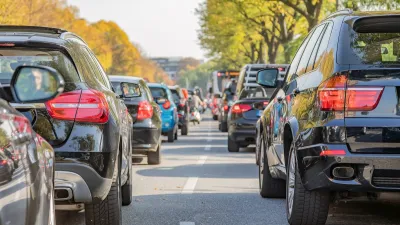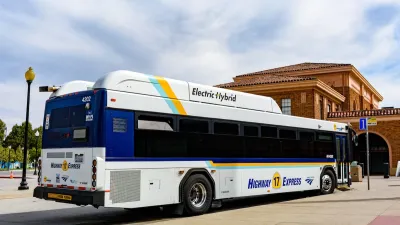Next American City reviews a new book called Traffic: Why We Drive the Way We Do (and What it Says about Us) by journalist Tom Vanderbilt, which follows in the footsteps of Freakonomics and Blink.
"Touching on neuroscience, psychology, economics and urban planning, Vanderbilt leads us through a series of case studies that gently inform us, despite what we know in our hearts, that we are not all traffic experts. He takes us to the Los Angeles traffic control center on Oscar night, uses the lines at Disneyland's Space Mountain to explain the pros and cons of congestion pricing and introduces us to a Stanford University team that has discovered how difficult it is to program a robot to drive a car.
Programming humans to drive is nearly as difficult, it turns out, as the act of driving is fraught with optical and neurological blind spots. The speed of our vehicles has outpaced the speed of evolution, such that our brains and eyes, accustomed to traveling at much slower speeds, deceive us repeatedly. One study cited by Vanderbilt found that at 30 mph drivers are presented with roughly 1,320 pieces of information a minute - and we have a distinct fondness for misinterpreting them. We have trouble gauging the speed of an oncoming car at a distance, for example, and in a phenomenon known as "inattentional blindness," we tend to overlook the objects we don't expect to see - the very objects that pose the most danger. In ways large and small, we misjudge risk."
FULL STORY: Traffic: Why We Drive the Way We Do

Americans May Be Stuck — But Why?
Americans are moving a lot less than they once did, and that is a problem. While Yoni Applebaum, in his highly-publicized article Stuck, gets the reasons badly wrong, it's still important to ask: why are we moving so much less than before?

Using Old Oil and Gas Wells for Green Energy Storage
Penn State researchers have found that repurposing abandoned oil and gas wells for geothermal-assisted compressed-air energy storage can boost efficiency, reduce environmental risks, and support clean energy and job transitions.

Placekeeping: Setting a New Precedent for City Planners
How a preservation-based approach to redevelopment and urban design can prevent displacement and honor legacy communities.

Study: Maui’s Plan to Convert Vacation Rentals to Long-Term Housing Could Cause Nearly $1 Billion Economic Loss
The plan would reduce visitor accommodation by 25,% resulting in 1,900 jobs lost.

Idaho Data: Unexpected Vehicle Repairs Exacerbate Housing Instability, Eviction Risk
Over 21 percent of clients struggle with transportation barriers.

A Year-Long Investigation On Permanent Supportive Housing
The New York Times reveals what’s working and what’s not in the cornerstone of Housing First.
Urban Design for Planners 1: Software Tools
This six-course series explores essential urban design concepts using open source software and equips planners with the tools they need to participate fully in the urban design process.
Planning for Universal Design
Learn the tools for implementing Universal Design in planning regulations.
Heyer Gruel & Associates PA
City of Moreno Valley
Institute for Housing and Urban Development Studies (IHS)
City of Grandview
Harvard GSD Executive Education
Salt Lake City
NYU Wagner Graduate School of Public Service
City of Cambridge, Maryland





























